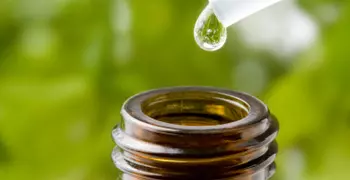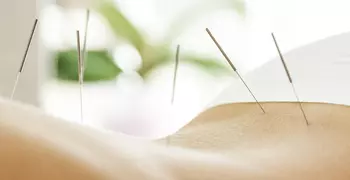Migraines

What are headaches?
Headaches are defined as pain in the head or upper neck. This is one of the most common locations of pain in the body and one of the most common reasons why people go to the doctor. Seven in 10 people have at least one headache a year, and 45 million Americans suffer from chronic headaches.
There are a number of underlying causes, most of which are benign. Primary headaches, which account for over 90% of headache pain, include migraine, tension, and cluster headaches, and are thought to have an underlying vascular (blood vessel) component.
This section addresses primary headaches only and assumes that you have had a provider rule out other causes of pain. It focuses primarily on tension and migraine headaches (the best way to identify what type of headache you have is to give your provider a detailed history of your symptoms).
Tension Headaches
Tension headaches are the most common type of primary headache and affect as many as 90% of adults. Tension headaches typically feel like a tightening on both sides of the head. They can last for minutes or days, and can happen frequently. Tension headaches are often the result of stress or bad posture, which causes tightening of the muscles in the neck and the scalp. Tension headaches often worsen with noise and hot, stuffy environments. This type of headache occurs mostly in women over age 20.
Migraine Headaches
Migraine headaches are the second most common type of primary headache. An estimated 25 million people in the United States (about 12% of the population) will experience migraine headaches each year. Migraine headaches affect children as well as adults. Before puberty, boys and girls are affected equally by migraine headaches, but after puberty, more women than men are affected.
Migraine headaches are intense and throbbing, often involve one side of the head, and can make you sensitive to light or noise. Migraines last from hours up to three days. Some sufferers have an "aura" (a group of visual symptoms) just before an attack. Migraines recur at intervals of varying length. Some people have attacks several times a month; others have less than one a year. Most people find that migraine attacks occur less frequently and become less severe as they get older
Cluster Headaches
Cluster headaches are less common than tension or migraine headaches, but still affect about 1 million people in the United States. Cluster headaches are non-throbbing and usually are felt on one side of the head behind an eye. They generally occur between one and four times a day. Like migraines, cluster headaches are likely to be related to an increased blood flow as a result of the blood vessels in the brain widening. More common in men, they can happen over several days and usually last 30 to 45 minutes.
Caution
New severe headaches, especially those accompanied by a change in vision, mental status, loss of sensation or motor function, fever, stiff neck, fainting, or seizures, can be life threatening and should be immediately evaluated by a healthcare provider. In addition, you should also see your healthcare provider if you have a history of headaches, but experience a change in the pattern or intensity. Headaches, along with other systemic symptoms, like unexplained weight loss, known cancer, or immune disorders should be evaluated by a professional.
What are the conventional treatments for headaches?
When lifestyle changes are not enough to manage headaches, there are medications that can be used to make less frequent and severe. Over-the-counter medications that are helpful include
- Aspirin and aspirin-caffeine combinations.
- Acetaminophen.
- Non-steroidal anti-inflammatory drugs (ie ibuprofen)
Tension Headaches
When tension headaches are not relieved by OTC medications, providers sometimes prescribe anti-depressant medications on a preventive basis to help avoid overuse of periodic medications.
Migraine
Prescription medications that are commonly used to treat migraine headache include:
- Triptans (such as Imitrex)
- Ergot derivatives
Both triptans and ergots are taken periodically and should be started as soon as possible when migraine symptoms are developing.
When migraine headaches occur more than twice a month, or if they make it hard to function at home, school or work, then daily medications are prescribed as preventive therapy. Medications used for migraine prevention are traditionally used for other conditions but are effective in preventing headaches. They include:
- Beta-blockers (ie propanolol)
- Anti-depressants
- Anti-seizure medications (ie Depakote)
What lifestyle changes are recommended for headaches?
Exercise
Even if you have headaches, you should follow the government recommendations for exercise and activity for your overall health. There have been some studies on the impact of exercise on headaches. In one study, aerobic exercise done for 30 minutes, three times a week, decreased the intensity of headaches, and had mixed impacts on frequency of headaches.
Diet
Up to 20% of migraine sufferers have identified food triggers, such as aged cheeses, wine, dark beers, cashews, onions, chocolate, processed meats, food additives, wheat, and dairy. Migraine sufferers should consume a generally healthy diet of whole foods, minimizing additives and avoiding identified triggers.
Excess caffeine use (6 cups of coffee or more) can result in chronic daily headaches, and caffeine withdrawal can trigger migraines. Episodic caffeine can help some migraine headaches acutely, probably by constricting the blood vessels involved.
Sleep
Improving sleep can decrease the frequency of migraines, and is likely to benefit tension headaches as well. Having good sleep hygiene, with a regular routine, often leads to a decrease in both frequency and duration of migraines.
What are some integrative therapies and healing practices to consider for headaches?
Mind-Body Practices
Self-awareness, which is a critical aspect of mind/body practices, can help you be more aware of your body cues and perhaps avoid or minimize a headache.
Two practices that can be very helpful with tension headaches are progressive muscle relaxation and guided imagery. In additions, studies have shown that imagery and relaxation used with thermal biofeedback (learning to increase the skin temperature of fingers) decreases migraine symptoms significantly.
The concensus from a number of individual research studies is that biofeedback for migraines is comparable with drug therapy for prevention. Biofeedback does require high motivation and a commitment to at least 10-15 hour-long training sessions and regular practice at home.
There is a consistent body of research showing the effectiveness of behavioral treatments for tension-type headaches. Relaxation training, cognitive-behavioral therapy with or without relaxation training, specific types of biofeedback combined with relaxation training, and the same biofeedback alone have all been shown to be effective for reducing tension-type headache symptoms.
Mindfulness based stress reduction (MBSR), which people can learn in an 8-week course, has been shown to improve mood, relax muscle tone, and shift pain perception-benefiting any headache sufferers.
Manual Therapies
Physical therapy and movement training (like Feldenkrais) can help decrease muscle tension and improve range of head and neck movement. Studies have shown that physical therapy decreases frequency of tension headaches. Massage therapy has been shown in some studies to be more effective than acupuncture for migraine pain, and equally effective for tension headaches.
Chiropractic manipulation for migraines have shown improvement in frequency, duration, disability, and medication use, compared with controls. Chiropractic may be additionally useful when combined with biofeedback practices.
Craniosacral therapy, which stems from osteopathic practice, is a very gentle manipulative approach, intending to restore balance and flow to the cerebrospinal fluid, which circulates around the spinal cord and brain. A series of 4-6 treatments have been reported in practice to be very effective for both migraine and tension headache sufferers, and benefits may be long-lasting.
Supplements and Botanical Medicines
Typical doses for each botanical are indicated below. However, you should talk with your healthcare provider before adding botanicals to your health regimen and ask about the right dosage for you.
- Riboflavin or Vit B2 has significant preventive effects for migraines, taken in 200 mg twice daily with meals and may work additively with prescription beta-blocker medications.
- Magnesium has been found to have preventive effects for migraines, and may be helpful as an intravenous infusion in the office for patients suffering from an acute migraine. For prevention, use potassium magnesium aspartate, 500 to 1000 mg at bedtime, or magnesium dicitrate 600 mg daily. Magnesium gluconate may be an alternative form to try as diarrhea is a problematic side-effect.
- Feverfew can decrease the frequency and severity of migraines, although long term safety studies have not been done. The dose is up to 125 mg/d of dried leaf standardized to 0.2% parthenolide, the active ingredient.
- Butterbur has been shown in several good studies to decrease the frequency of migraine attacks by as much as 50% or more. It is used at doses of 50 mg 3 times a day for a month, then 50 mg twice a day thereafter, standardized to 15% petasins. Side effects reported are minimal.
- Co-enzyme Q10 taken in 100 mg three times daily, or a single dose of 150 mg per day, have both been shown to reduce migraine headache frequency after 3 months of use. It does not impact intensity or duration of a headache that does occur.
Alternative Systems of Healthcare
Traditional Chinese Medicine practitioners work with an individual to optimize their nutrition, activity, and internal energetic balance, using herbs, acupuncture, movement practices (Qi Gong and Tai Chi), massage (Tui Na), and other techniques. Multiple clinical trials have shown acupuncture to be a effective adjunct treatment for headaches, although it is not clear how much placebo effect may be involved. Six to eight sessions of acupuncture, over 8 weeks, is recommended as a trial for migraine sufferers, and for those with chronic headaches of any kind.
Naturopathic Medicine includes diet, exercise, natural botanicals and supplements, mind/body practice, hydrotherapy, and other tools. These natural approaches may be particularly helpful for putting together a preventive approach for headache sufferers.
Homeopathy is another approach that is used by individuals to manage their headaches.
How to integrate complementary therapies and healing practices in headaches
The best approach to headaches of any type is prevention first. Basic lifestyle changes should always be made first, including:
- Keep a diary of symptoms, looking for trends with weather, food, behaviors, hormone cycles, stresses and exercise patterns. This is especially helpful to identify the nature of the headaches (tension versus vascular versus combination).
- Make changes to avoid triggers whenever possible.
- Establish daily routines of exercise, stress management, and sleep. Include aerobic exercise at least 3 times a week.
- Change your diet to optimize nutrition while minimizing any known food triggers.
- If you try a therapeutic approach, such as massage, acupuncture, homeopathy, physical therapy, or others, allow 3-6 months for a fair assessment of the effectiveness of that approach for your individual situation.
- If you plan to try drugs or supplements for prevention of migraines, consider natural products or supplements first, adding in prescription medications as needed.
- In addition to working on prevention, it is a good idea to have a plan in place for the occurrence of an acute headache, whether migraine or tension. Experiment with self-care practices, therapeutic interventions (like acupuncture or manual therapies), and medications. You might want to minimize the use of prescriptive medications to keep them most effective when most needed.








